06 Jun Edexcel IGCSE Biology – Investigate the effect of light on net gas exchange from a leaf, using hydrogen carbonate indicator
Edexcel IGCSE Biology (2017)
2.45B Investigate the effect of light on net gas exchange from a leaf, using hydrogen-carbonate indicator
(1) Experimental setup
- Setup four tests tubes each containing equal volume of hydrogen-carbonate indicator solution.
- Place three large leaves in three test tubes sealing it with a bung.
- The four test tubes are exposed to bright light for 24 hours.
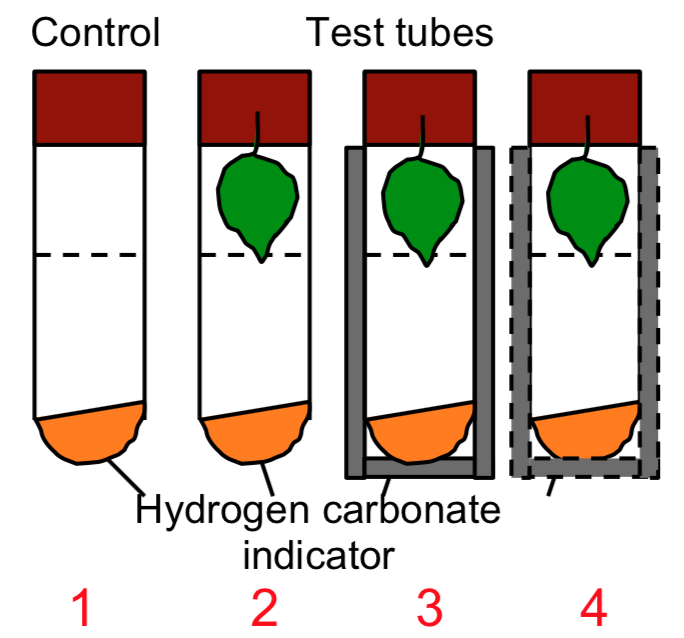
Figure 1 – Experimental setup to investigate the effect of light on net gas exchange in leaves, using hydrogen-carbonate indicator solution.
1 – Control (no leaf)
2 – Tube with leaf
3- Tube with leaf covered with aluminium foil (blocks out light)
4- Tube with leaf covered with guaze (partially lets light through)
(2) Results
Control tube vs. tube with leaf
Test tube covered in aluminium foil
Result
The test tube covered with aluminium foil changed colour from orange to yellow.
Explanation
Aluminium foil prevents light entering the test tube. The rate of respiration is greater than rate of photosynthesis (as light is needed for photosynthesis). So, leaf gives out CO2, which dissolves in the hydrogen-carbonate indicator solution to change its colour from orange to yellow.
Test tube covered with guaze
Result
The test tube covered with guaze didn’t show any colour change. The colour of the hydrogen-carbonate indicator solution remained orange.
Explanation
Guaze partially allows the light to enter the test tube. Therefore, the rate of respiration equals the rate of photosynthesis. So, there is no change in CO2 in the test tube, which keeps the hydrogen-carbonate indicator solution orange in colour.
Edexcel IGCSE Biology Past exam questions
Ans (a) Light intensity affects photosynthesis. 
Ans (b): 1) Size of the leaf 2) Volume of indicator
Ans (c) Tube D acts as a control. This tube was setup to see whether the indicator will change colour with no leaf.
Ans (d) i The rate of photosynthesis is more than the rate respiration so less CO2 is present in the test tube. This causes CO2 to leave the indicator solution and a purple colour is observed. 
Ans (d) ii : In tube B, no photosynthesis takes place. CO2 is released from respiration, which dissolves in the indicator solution to produce a colour change from orange to yellow. 
Ans (e) i: In tube C, the rate of respiration equals the rate of photosynthesis. Hence, there is no net change of CO2 in the test tube resulting in no change of colour of the hydrogen-carbonate indicator. 
Ans (e) ii : In tube D, there was no leaf. Hence, no change observed. 
Ans (f) : Limewater can only show an increase in CO2 concentration. It will not be able to show a decrease in CO2 concentration.



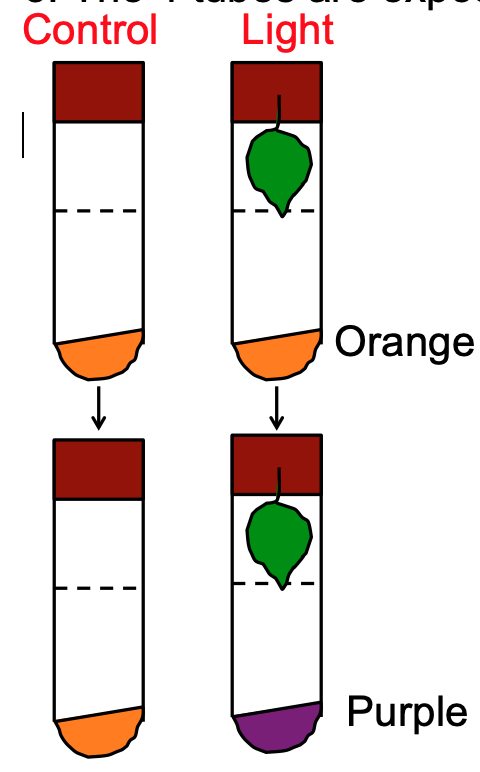
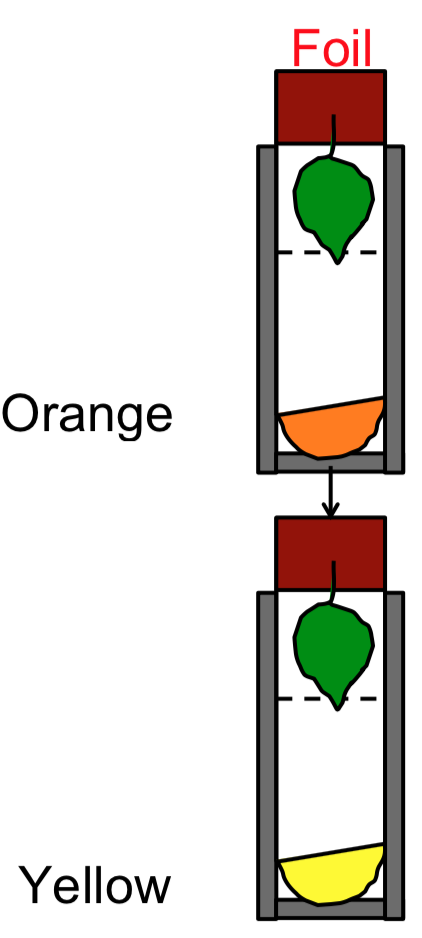
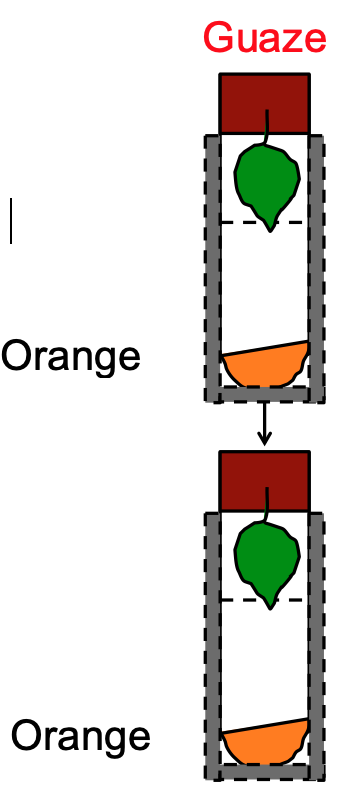


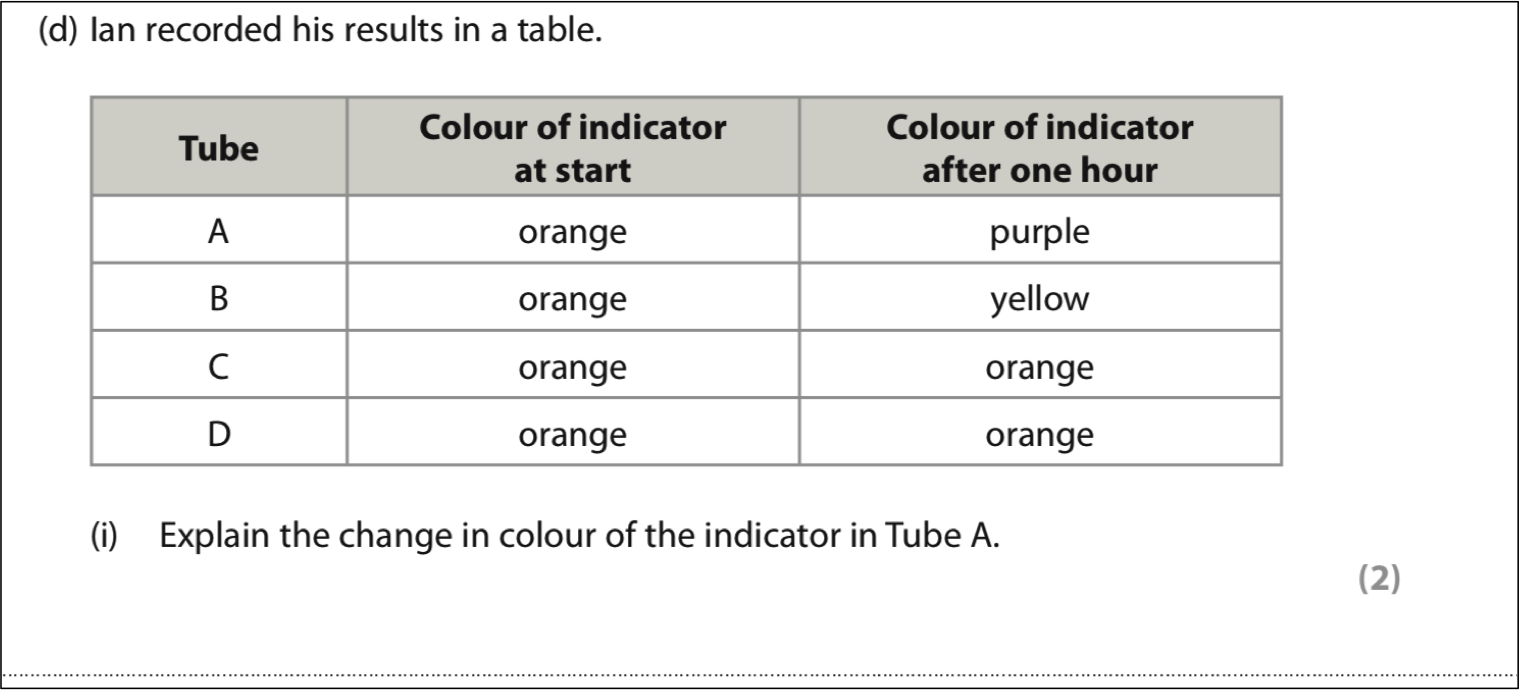
Sorry, the comment form is closed at this time.